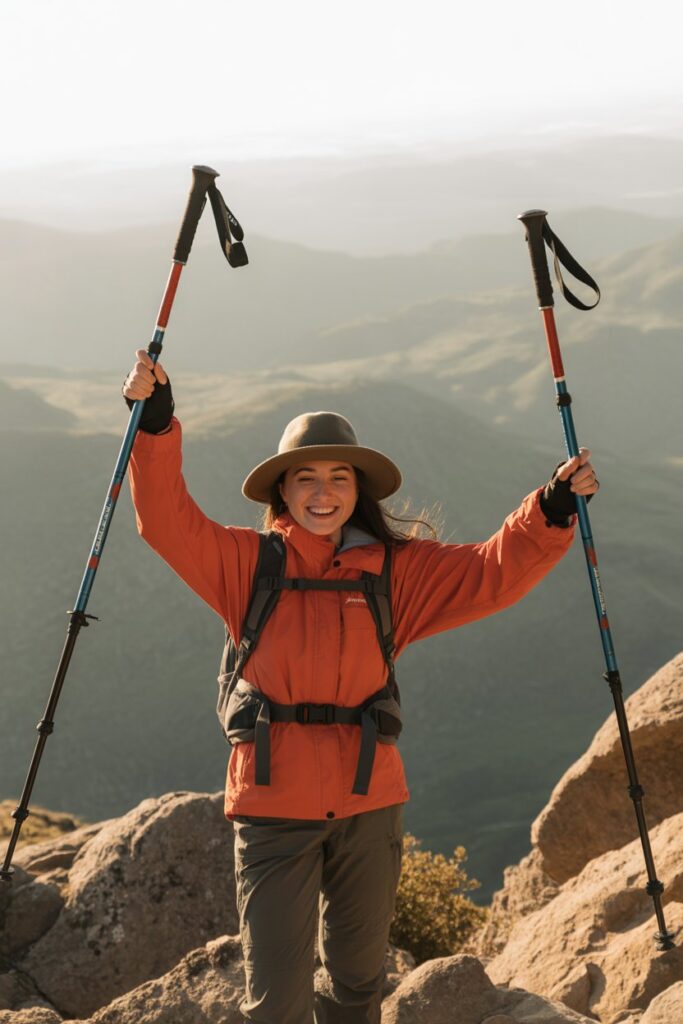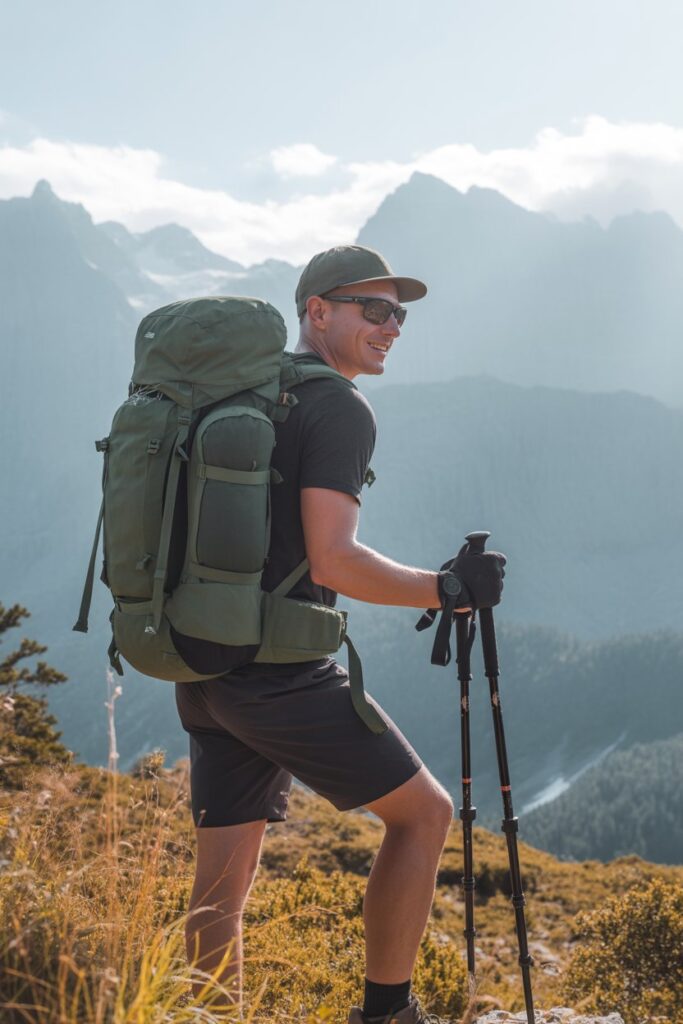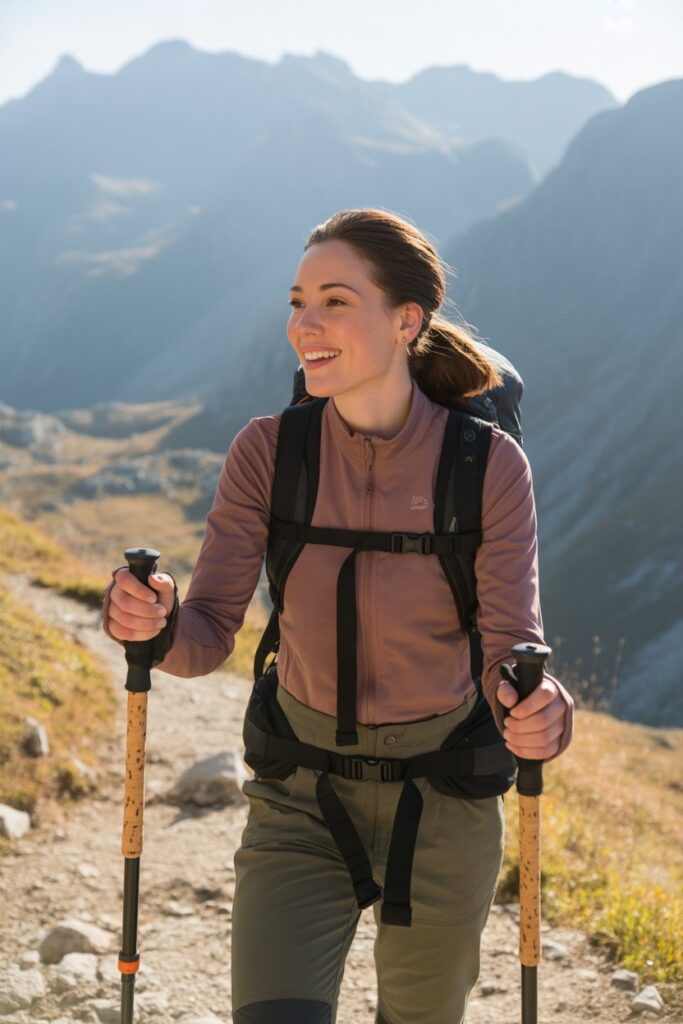If you’ve ever been halfway through a hike and thought, Why are my shoulders aching? or Why do my hands feel weirdly numb?, chances are your trekking poles are set to the wrong height.
And no, it’s not just you – even experienced hikers get this wrong.
Pole height is one of those sneaky little details that doesn’t seem important. Until you’ve been walking for an hour and your body sends you a very clear We have a problem memo.
The good news? Fixing it is easy. Really easy.
Once you know how to set your trekking poles correctly, you’ll feel the difference almost instantly. Better posture. Less strain. And that sense that you could hike longer without your arms and shoulders staging a protest.
Hiking should be about enjoying the view, not counting down the minutes until you can drop your gear. Get this one thing right, and your adventures will be a lot more comfortable.

Why pole height actually matters
Trekking poles are an extension of your body.
If they’re not the right size, everything else has to compensate. Your arms, shoulders, back, and neck will work harder than they should.
Too long? Your arms angle awkwardly high. Your shoulders stay in a constant shrug like you’re in some strange “permanent photo pose.”
Too short? You lean forward, putting extra stress on your back and knees. And leaning forward for hours uphill is not a fun experience.
When you get the height right, your poles support your natural posture. Your muscles work efficiently. Your energy is used for moving forward – not fighting against bad positioning.
Better balance. Smoother steps. And fatigue that feels satisfying, not draining.
How to measure trekking poles for your height
Golden rule: on flat terrain, your elbows should be at a 90-degree angle when holding the poles.
That’s it. No complex math, No tape measure rituals, No chanting under a full moon.
In-store? Stand with the poles on the ground. Adjust until your elbows form that right angle. Done.
Shopping online? Use this guide:
- Under 5’1” (155 cm) – 100 cm poles
- 5’1” to 5’7” (155–170 cm) – 110 cm poles
- 5’8” to 5’11” (171–180 cm) – 120 cm poles
- 6’0”+ (181+ cm) – 130 cm poles
Adjustable poles are the safest choice. They let you fine-tune your setup and adapt to different terrains. Perfect if you share your gear or swap between chunky winter boots and light summer shoes.
Adjusting pole height for different terrains
Flat trails are your baseline. But once the ground tilts, tweak your poles.
Uphill – Shorten by 5–10 cm. This stops you from overreaching and helps you push upward more efficiently.
Downhill – Lengthen by 5–10 cm. This adds stability and takes pressure off your knees.
Mixed terrain – Adjust on the go. Modern poles change length in seconds, even with gloves on.
This is where adjustable poles shine. A quick tweak can save you hours of post-hike soreness.
Common mistakes to avoid
Too long – Shoulders lifted and tense for hours.
Too short – Forward lean that tires your back and affects your breathing.
No readjustment – Leaving your poles in “downhill mode” on flat ground is like wearing ski boots to a wedding. Technically possible, but a terrible idea.
Pole height is not a one-time setup. Think of it as something you interact with throughout the hike.
Recommended trekking poles with easy height adjustment
Locking mechanism matters as much as length.
Lever locks – Quick, secure, glove-friendly.
Twist locks – Light and sleek, but can slip if not tightened well.
If you looking for one that probably fits your requirements than my two picks:
“Black Diamond Trail Ergo Cork” – Comfortable, durable, great for long days.
“LEKI Micro Vario Carbon” – Lightweight, packs small, adjusts fast.
The right poles won’t just support you – they’ll make you feel confident no matter the terrain.
Bringing it all together
Pole height isn’t a “set it once and ignore it” thing. It’s the key to making your hikes more comfortable and efficient.
When the height is right, your body moves naturally. Your joints stay happy. Your energy goes into exploring, not battling discomfort.
Before your next hike, set your poles for flat ground. Then get into the habit of adjusting for climbs and descents.
It’s a small change that makes a big difference – and lets you focus on why you’re out there in the first place.


